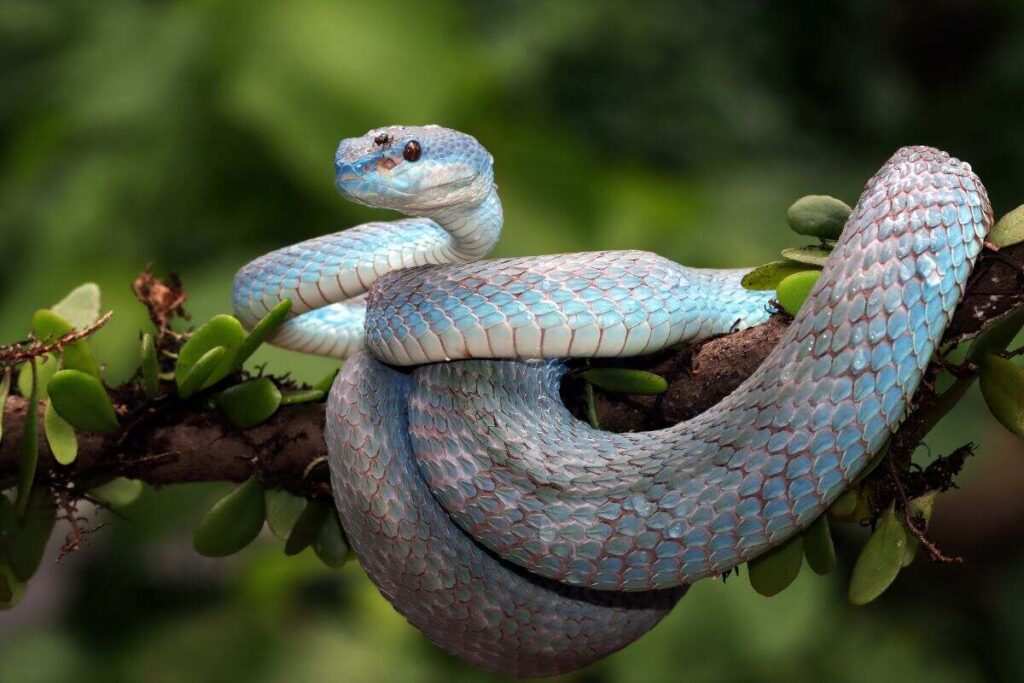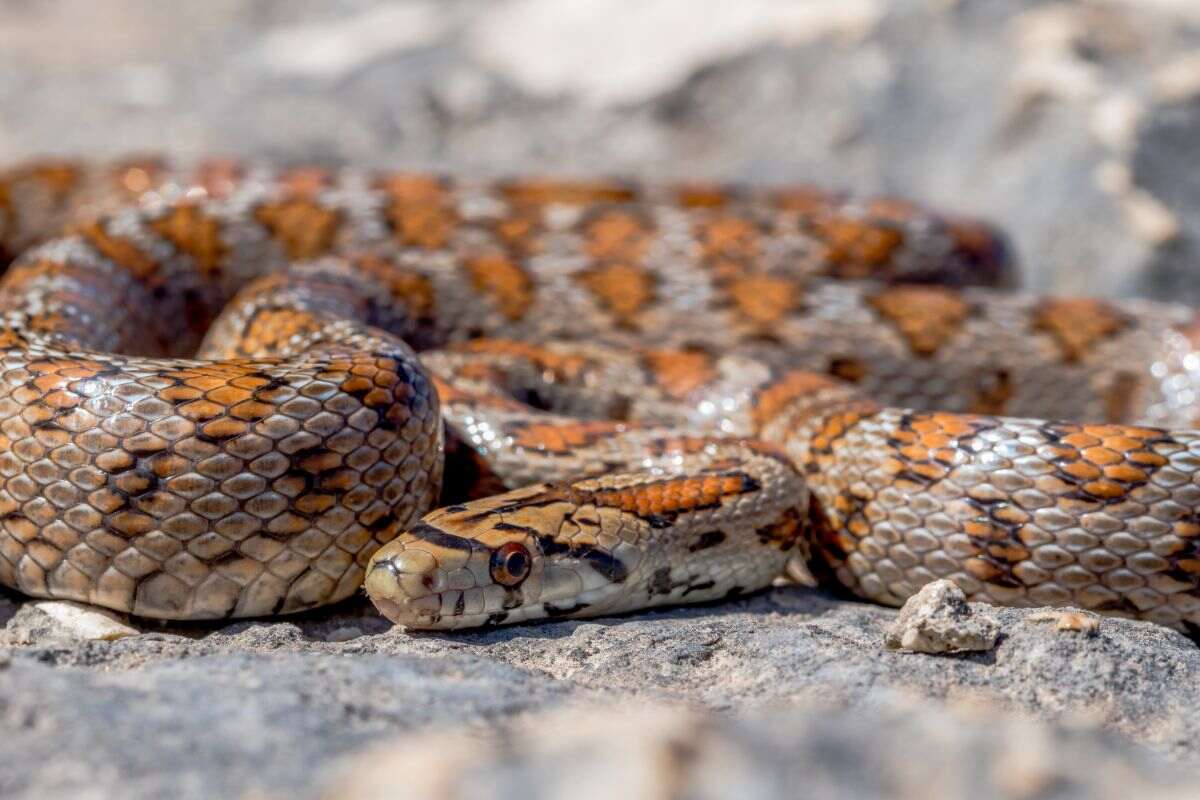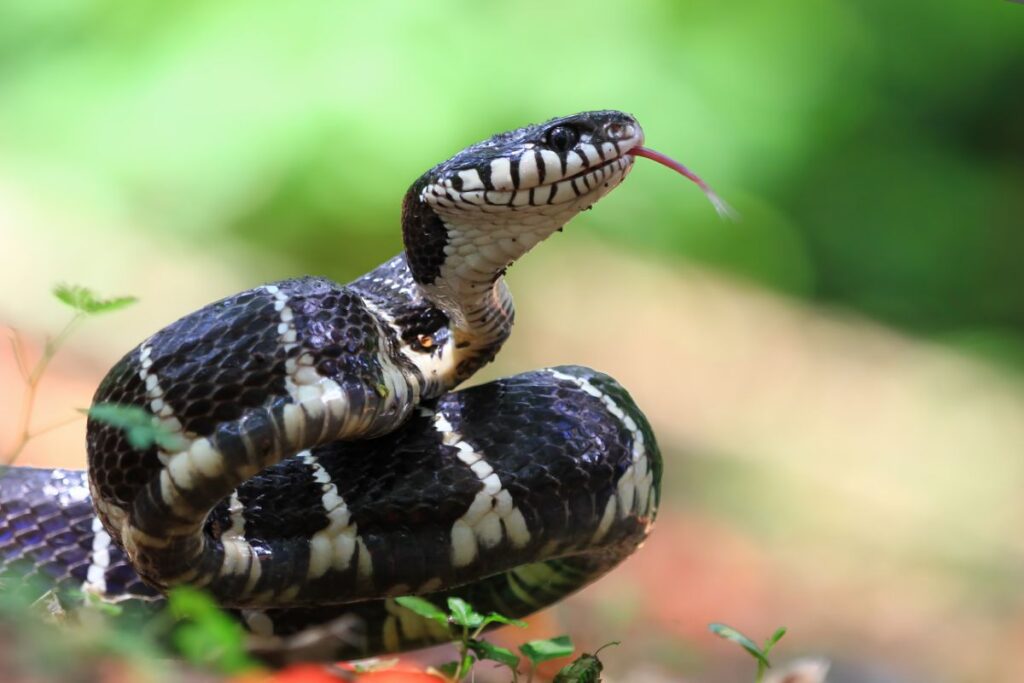Understanding the lifespan of snakes, both in the wild and captivity, is an intriguing subject for herpetologists, conservationists, and reptile enthusiasts alike. How Long Do Snakes Live? One of the most adaptive reptiles, exhibit significant variations in longevity based on a myriad of environmental, biological, and human factors. While some species thrive in controlled environments, others are at the mercy of nature’s unpredictability. This article delves into the lifespan of snakes in their natural habitats versus captivity, exploring the intricacies that influence their longevity. The lifespan of a snake is primarily determined by its species, habitat, and the care it receives. Snakes in the wild must contend with various threats, from predators to harsh environmental conditions, whereas snakes in captivity often enjoy the benefits of consistent care and protection. However, living in captivity versus the wild has both advantages and drawbacks. Understanding the nuances of these differences helps provide a more comprehensive picture of snake longevity.
Importance of Snake Longevity
Comprehending snake longevity is crucial for pet owners and conservationists striving to protect vulnerable species. Knowing how long different species can live helps inform care, breeding, and habitat preservation decisions. Furthermore, understanding how various factors impact longevity can aid in improving the overall well-being of snakes, whether in captivity or the wild.
Factors Affecting Snake Lifespan
Environmental Conditions
The environment in which a snake lives plays a pivotal role in determining its lifespan. Snakes are subject to the full spectrum of natural challenges in the wild. They must contend with fluctuating temperatures, limited access to food and water, and the ever-present threat of predators. Wild snakes are exposed to the whims of nature, with seasons of drought or cold presenting particularly harsh conditions. In captivity, however, environmental conditions can be carefully controlled. Temperature, humidity, and lighting are regulated to replicate a snake’s natural habitat, thereby reducing the strain of environmental fluctuations. Protective snakes are often better equipped to avoid stress-related illnesses and conditions that can shorten their lifespan in the wild by ensuring that these elements are kept within optimal ranges.
Species-Specific Traits
In terms of lifetime, not all snakes are created equal. Certain species are naturally longer-lived than others, with more giant snakes generally outliving their smaller counterparts. For example, ball pythons, known for their docile nature and relatively large size, can live up to 30 years in captivity. In contrast, garter snakes, which are smaller and more susceptible to environmental changes, have shorter lifespans. Because their metabolisms are typically slower, larger animals experience less physical stress over time. This is particularly evident in the difference between large constrictors like boas and pythons and more minor, more agile species like colubrids. These species-specific traits make it crucial for snake owners and conservationists alike to tailor care and conservation strategies to the needs of each species, recognizing that what works for one may not be suitable for another.
Diet and Nutrition
A snake’s diet is a fundamental factor in its longevity. In the wild, snakes often face the challenge of irregular access to prey, leading to periods of starvation or malnutrition that can take a toll on their health. By contrast, captive snakes benefit from a consistent and carefully planned diet. Pet owners can ensure that their snakes receive the right balance of nutrients, thus avoiding the deficiencies and health problems arising from an imbalanced or inadequate diet. Regular feeding of prey that closely mimics a snake’s natural diet supports optimal bodily function and longevity. However, overfeeding can be an issue in captivity, leading to obesity and related health problems. It is essential to strike the right balance, providing enough food to sustain the snake’s health without overindulging it.
Snake Lifespan in the Wild
Average Lifespan of Common Snake Species in the Wild
The lifespan of wild snakes varies greatly depending on the species. For example, wild ball pythons typically live between 10 and 15 years, while boas and anacondas, which are larger and have fewer natural predators, can live up to 20 years. Smaller species, such as corn snakes and garter snakes, tend to have shorter lifespans, typically ranging from 6 to 8 years. These lifespans directly result from the numerous challenges that wild snakes face, including predation, disease, and environmental hazards. Wild snakes are rarely afforded the same longevity as their captive counterparts, even in the most favorable conditions.
Challenges Snakes Face in the Wild
Predation
Wild snakes must constantly be on guard against predators. Birds of prey, larger mammals, and even other snakes significantly threaten their survival. While some species have developed camouflaging abilities or defensive tactics to evade predators, the constant vigilance required to avoid becoming prey can take a toll on a snake’s overall health, potentially shortening its lifespan.
Disease and Parasites
Snakes in the wild are highly vulnerable to diseases and parasites, which can dramatically reduce their lifespan. Wild snakes rely solely on their immune systems to fight off infections and illnesses without access to medical treatment. In many cases, this is not enough, and a snake that contracts a severe disease or is heavily infested with parasites may die prematurely.
Habitat Loss
Habitat destruction is a significant threat to wild snake populations. As human development encroaches on natural environments, many snake species are losing the habitats they rely on for food, shelter, and reproduction. The resulting scarcity of resources leads to malnutrition, reduced reproductive success, and, ultimately, shorter lifespans for affected snake species.
Snake Lifespan in Captivity
Average Lifespan of Common Snake Species in Captivity
Snakes usually live a lot longer in captivity than they do in the wild. While corn snakes can survive in captivity for up to 20 years, a well-maintained ball python can live for up to 30 years. Even smaller species, such as garter snakes, can significantly extend their lifespans when kept in a controlled environment. This longevity is attributed mainly to the absence of natural predators, regular and nutritious food provision, and access to veterinary care.
Impact of Controlled Environments on Longevity
Access to Food and Water
One of the primary benefits of captivity is the guaranteed availability of food and water. In the wild, snakes must expend energy hunting for prey, and they are not guaranteed to succeed. In captivity, however, snakes are fed a diet tailored to their nutritional needs. This eliminates the risk of starvation and ensures their bodies receive the nutrients required to maintain optimal health.
Protection from Predators and Disease
Captive snakes are protected from the natural predators that pose a constant threat in the wild. Additionally, they benefit from regular veterinary care, which helps prevent and treat diseases before they become life-threatening. The comprehensive care that captive snakes receive, which includes routine examinations, immunizations, and parasite management, results in longer lifespans.
Comparing Lifespan: Wild vs Captivity

Critical Differences in Lifespan between Wild and Captive Snakes
Snakes in captivity generally live longer than those in the wild. The absence of predators and diseases, combined with consistent care, creates an environment where snakes can thrive without the threats that shorten their lives in the wild.
Case Studies of Different Snake Species
A comparison of ball pythons and garter snakes shows how captivity affects their lives. Ball pythons, which face numerous challenges in the wild, tend to live twice as long in captivity. Similarly, garter snakes that might only survive a few years in the wild can live up to 10 years under human care.
Influence of Captivity on Snake Health and Behavior
While snakes in captivity live longer, this does not always translate to improved health. If not properly managed, captivity can lead to obesity, stress, and other health issues. Behavioral changes, such as lethargy and decreased activity, are also common in captive snakes.
Common Misconceptions About Snake Lifespan
Myths Regarding Lifespan in the Wild vs. Captivity
A common myth is that snakes in captivity live unnatural lives that drastically shorten their lives. Snakes can live much longer in captivity when cared for properly. Another misconception is that all wild snakes live shorter lives; while this is often true, some species can thrive for extended periods in the wild under ideal conditions.
Clarifying Longevity Factors
While it is true that captivity can extend a snake’s life, the quality of care plays an essential role. Improper environments, poor diet, or lack of enrichment can negatively impact a snake’s longevity, even in captivity.
Human Impact on Snake Lifespan
Conservation Efforts and Their Role in Extending Snake Lifespan
Conservation programs to protect snake habitats can help extend snakes’ lifespans worldwide. Efforts to curb habitat destruction, reduce poaching, and limit human encroachment are critical in ensuring snakes live out their natural lifespans.
Effects of Environmental Change on Wild Snake Populations
Climate change and deforestation have had devastating effects on wild snake populations. These environmental changes reduce food availability and suitable habitats, leading to shorter lifespans for many species.
Tips for Prolonging Snake Lifespan in Captivity
Best Practices for Snake Care
For snakes maintained as pets to live as long as possible, proper care is essential. This entails supplying a good meal, keeping the temperature and humidity levels appropriate, and allowing the snake adequate room and stimulation to replicate its natural habitat.
Diet, Habitat, and Enrichment Strategies
Feeding a varied and species-appropriate diet, offering ample space for the snake to explore, and providing environmental enrichment are all strategies that can help prolong a captive snake’s life. Ensuring the habitat mimics the natural environment helps reduce stress and promotes well-being.
Conclusion
The comparison between the lifespans of wild and captive snakes reveals intriguing insights into how environmental and care factors influence their longevity. While captive snakes generally live longer due to controlled conditions, this poses challenges. Understanding these dynamics is essential for snake owners and conservationists, helping ensure that snakes, whether in the wild or in captivity, live healthy, fulfilling lives.
Frequently Asked Questions (FAQs)
How Can I Tell the Age of My Snake?
Determining a snake’s exact age can be difficult, especially if it was not born in captivity. However, certain signs, such as size, weight, and the condition of its scales, can provide clues. Professional breeders or veterinarians can often give an estimate based on these characteristics.
Do Wild Snakes Live Longer than Captive Snakes?
In general, no. Due to the lack of predators, steady food supply, and medical treatment, captive snakes typically live longer than their wild counterparts. They are subject to many hazards that decrease their lifespans.
What Are the Oldest Known Snake Species?
Species like the ball python and boa constrictor are known for their long lifespan in captivity. Under optimal conditions, some individual snakes of these species have been known to live beyond 30 years.
Can Captive Snakes Thrive in the Wild?
Captive snakes may struggle if released into the wild, as they lack the skills to hunt and be predators. Due to the challenges they would face, it is generally not advisable to release captive snakes into the wild.
How Does Stress Affect a Snake’s Lifespan?
Stress can significantly reduce a snake’s lifespan, particularly in captivity. Factors such as improper housing, poor diet, and lack of enrichment can lead to chronic stress, affecting the snake’s health and longevity.





















